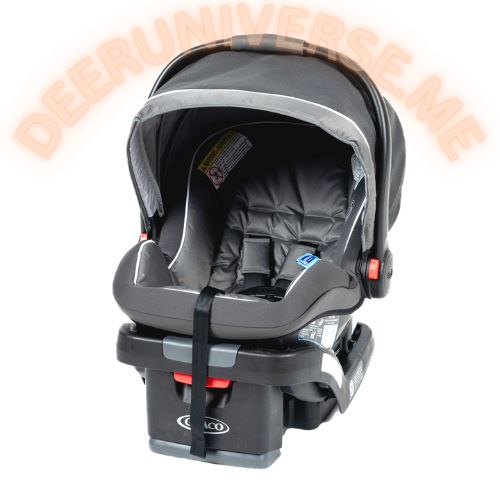Top 10 Infant Car Seats in 2024: A Complete Guide to Safety and Comfort
Finding the best infant car seat can be challenging with so many options available. The right choice balances safety, comfort, and convenience for both parents and babies. In this guide, we review the top 10 infant car seats of 2024, diving into key features, installation ease, and compatibility to help you make an informed, confident choice for your family. Whether you’re looking for advanced safety features, portability, or eco-friendly options, this list has you covered.
| Image | Product | Detail | click here |
|---|---|---|---|
 | Chicco KeyFit 30 Infant Car Seat and Base | Rear-Facing Seat for Infants 4-30 lbs.| Infant Head and Body Support | Compatible with Chicco Strollers | Baby Travel Gear |
| click |
 | Graco SnugRide SnugLock 35 LX Infant Car Seat, Baby Car Seat Featuring TrueShield Side Impact Technology |
| Click |
 | Britax One4Life ClickTight All-in-One Car Seat, Eclipse Black |
| Click |
 | UPPAbaby Mesa V2 Infant Car Seat/Easy Installation/Innovative SmartSecure Technology/Base + Robust Infant Insert Included/Direct Stroller Attachment/Stella (Grey Mélange) |
| Click |
 | Safety 1st Grow and Go All-in-One Convertible Car Seat, Rear Facing Car Seat 5-40 lbs, Forward Facing Car 30–65 lbs, High Back Booster Seat 40-100 lbs, Carbon Ink |
| Click |
Infant car seats are specifically designed to provide safe, secure travel for newborns and small babies. Unlike seats for older children, infant car seats are uniquely crafted to keep babies in a rear-facing position, which is critical for safety. In this position, the seat cradles and supports a baby’s head, neck, and spine, which are particularly vulnerable during sudden stops or collisions.
The rear-facing design significantly reduces the risk of injury, as it distributes the force of an impact more evenly across the baby’s entire body, protecting delicate areas that are still developing. According to the National Highway Traffic Safety Administration (NHTSA), keeping children in a rear-facing seat until at least age two is one of the most effective ways to reduce injury in the event of a crashly, the American Academy of Pediatrics (AAP) recommends keeping babies rear-facing as long as possible, ideally until they exceed the height or weight limit of their infant car seat .This vital protection emphasizes why parents should always use an appropriate infant car seat and install it correctly to maximize safety benefits.
When it comes to infant car seats, there are two primary types to consider: rear-facing-only seats and convertible seats. Each type has specific benefits that make it appealing for different stages of a child’s growth and for parents’ varying needs.
- Rear-Facing-Only Infant Car Seats
Rear-facing-only seats are specifically designed for newborns and smaller babies, typically up to 22–35 pounds, depending on the model. These seats provide a secure, snug fit that offers superior support for an infant’s head and neck, making them a popular choice for a baby’s first year. Rear-facing-only seats also come with a convenient base that remains installed in the car, allowing parents to quickly detach and carry the seat, which is especially helpful for seamless transitions between car and stroller. Many models are compatible with stroller systems, adding to their ease of use for families on the go. - Convertible Car Seats
Convertible car seats are versatile options that can be adjusted as a child grows, allowing them to transition from a rear-facing position for infants to a forward-facing one for older toddlers. While this adaptability can be cost-effective over time, convertible seats may not offer the tailored fit that a rear-facing-only infant car seat provides. For this reason, many parents opt to use a rear-facing-only car seat for the first year, then switch to a convertible seat as their baby outgrows it.
Key Features to Look for in an Infant Car Seat
When selecting an infant car seat, prioritizing specific features can ensure safety, ease of use, and comfort for both the baby and parents. Here are some essential features to consider:
Safety Features
Safety is paramount, and there are several features that enhance an infant car seat’s protective capabilities. A five-point harness is essential for keeping your baby securely in place, as it distributes impact forces across the strongest parts of a baby’s body. Side-impact protection, often in the form of energy-absorbing foam or reinforced sidewalls, protects a baby’s head and torso during side collisions. Adjustable headrests grow with the baby, ensuring the head is always protected without compromising comfort. According to the National Highway Traffic Safety Administration (NHTSA), these features greatly increase the safety of car seats in collisions.
Ease of Installation
Proper installation is crucial, as an improperly installed car seat can significantly reduce its effectiveness. Look for car seats with LATCH (Lower Anchors and Tethers for Children) systems, which simplify the installation process by attaching directly to the car’s anchors. Many models also offer bubble level indicators and color-coded installation paths to help parents quickly check that the seat is installed at the correct angle. Features like these are especially helpful for first-time parents, ensuring that the seat is both secure and positioned for optimal safety.
Comfort and Support
Since newborns have delicate bodies, infant car seats should include extra padding and ergonomic designs that offer support for the head, neck, and spine. Breathable fabrics are also important to keep your baby comfortable during long trips, as they help regulate temperature and reduce sweating. Many models also feature plush, removable inserts for additional cushioning, which can be adjusted or removed as your baby grows.
Portability
If you plan on frequently moving the car seat between vehicles or using it with a compatible stroller, consider a lightweight option. Lightweight infant car seats make transferring easier and often come with handles that are ergonomically designed for carrying. Portable car seats are particularly useful for families on the go, enabling seamless transitions between the car and stroller.
Incorrect Installation
One of the most frequent issues is improper installation. According to the National Highway Traffic Safety Administration (NHTSA), nearly half of all car seats are installed incorrectly. This often happens when the seat isn’t securely fastened or is positioned at the wrong angle. A car seat that wobbles or can be easily moved side to side by more than an inch is not installed correctly. To prevent this mistake, use the car seat’s built-in LATCH system if your vehicle is compatible, and always refer to the car seat’s manual for guidance. Checking for bubble level indicators or angle guides on the seat can help ensure it is positioned properly.
Transitioning to a Forward-Facing Seat Too Early
Many parents make the mistake of switching their baby to a forward-facing car seat too soon. The American Academy of Pediatrics (AAP) recommends that children remain in a rear-facing car seat until at least the age of two or until they exceed the height and weight limit specified by the car seat’s manufacturer. The rear-facing position offers better protection for a baby’s head, neck, and spine in the event of a crash, as it allows the seat to absorb most of the impact force. Prematurely switching to a forward-facing seat increases the risk of injury, so it’s important to keep your baby rear-facing as long as possible.
Using Aftermarket Accessories
Parents often add extra padding, head supports, or toys to the car seat for added comfort or entertainment. However, most of these aftermarket accessories are not safety-tested with the car seat and can interfere with its protective design. Adding extra items, like strap covers or cushions, can compromise the fit of the harness, reducing its ability to properly secure your child in an accident. Only use accessories that are included with the car seat or explicitly approved by the manufacturer.1
Loose Harness Straps
Another common mistake is not tightening the harness straps enough. The straps should lie flat and be snug against your baby’s body without any slack. A quick way to test this is the “pinch test”—if you can pinch any excess fabric on the harness straps, they are too loose. Loose harnesses can lead to severe injuries in a crash because they fail to hold your baby securely in place.
Dressing Baby in Bulky Clothing
Parents sometimes dress their baby in thick coats or blankets, which can create gaps between the harness and the baby’s body. These gaps prevent the harness from fitting snugly, reducing its effectiveness. Instead, dress your baby in light, fitted clothing and use a blanket over the secured harness for warmth if needed.
Ignoring the Expiration Date
Infant car seats have an expiration date, typically between six to ten years from the date of manufacture. The materials used in the seat can degrade over time, affecting its ability to protect your baby in a crash. Always check the expiration date printed on the seat and avoid using a car seat that has expired.
Proper cleaning and maintenance of your infant car seat are crucial for ensuring it stays safe, functional, and comfortable for your baby. Here are some key tips to keep it in top condition:
1. Wash the Covers According to Manufacturer’s Guidelines
The seat covers and padding often get soiled with spills, food crumbs, and other messes. Most infant car seats come with removable fabric covers that can be easily detached and washed. Always refer to the manufacturer’s guidelines before washing, as some fabrics may require hand-washing or air-drying to maintain their quality. Machine washing or using a dryer when it’s not recommended can damage the material or shrink the cover, affecting its fit and safety.
2. Use Gentle Cleaners
When cleaning the hard plastic shell or harness, use mild soap and water. Avoid harsh chemicals, bleach, or strong detergents, as these can degrade the seat’s materials and compromise its integrity over time. A soft cloth or sponge is usually enough to wipe down the seat. For stubborn stains, use a gentle, baby-safe cleaner that won’t irritate your child’s skin.
3. Regularly Inspect for Wear and Tear
Perform a visual inspection of the car seat at least once a month. Look for frayed straps, loose threads, or cracks in the plastic shell. If you notice any damage, it’s essential to contact the manufacturer to determine if a replacement part is needed or if the entire seat needs to be replaced. Checking for wear and tear is especially important after a car accident, even a minor one, as the car seat’s protective materials may have been compromised.
4. Vacuum Crumbs and Debris
Food crumbs and dirt can accumulate in the crevices of the car seat, which not only looks messy but can also interfere with the harness’s function. Use a handheld vacuum with a narrow attachment to clean these hard-to-reach spots. This helps keep the seat hygienic and prevents debris from getting into the harness mechanism.
5. Avoid Excessive Heat and Sunlight
Prolonged exposure to direct sunlight or extreme heat can cause the materials of the infant car seat to fade, weaken, or warp. Whenever possible, park in shaded areas or use a sunshade to protect the seat. Heat can also make the buckles and straps uncomfortably hot for your baby, so it’s a good idea to check the temperature before placing your child in the seat.
6. Know When to Replace the Car Seat
Even with proper care, all car seats have a limited lifespan. Most infant car seats are good for about six to ten years from the date of manufacture. Check the label on the bottom of the seat for the expiration date. If the seat has been involved in a car accident, even if it appears undamaged, it’s typically recommended to replace it as a precautionary measure.
When to Transition from an Infant Car Seat to the Next Stage
Knowing when to transition from an infant car seat to the next stage is crucial for your baby’s safety and comfort. Infant car seats are typically designed to accommodate babies up to 22-35 pounds or around 30 inches in height, but each model has specific weight and height limits set by the manufacturer. To ensure the safest ride, always check your car seat’s manual for these details.
Signs It’s Time to Switch:
- Weight and Height Limits Most infant car seats are outgrown when your baby reaches the maximum weight or height specified by the manufacturer. For example, if your seat’s limit is 30 inches or 35 pounds, it’s time to switch when your baby exceeds either measurement. Remember that babies grow quickly, so it’s a good idea to keep an eye on their height and weight during regular check-ups.
- Head Position One clear sign your baby has outgrown the seat is when their head comes within an inch of the top edge of the seat. In the rear-facing position, the car seat must be able to support your baby’s head, neck, and spine. If your baby’s head extends too close to the top of the seat, it’s no longer providing adequate protection in the event of a crash.
- Switching to a Convertible Car Seat Once your baby outgrows their infant car seat, it’s time to transition to a convertible car seat in the rear-facing position. Convertible car seats are designed to accommodate a wider range of sizes, allowing you to keep your child rear-facing for a longer period. The American Academy of Pediatrics (AAP) recommends keeping children rear-facing until at least age two or until they exceed the height and weight limits of the convertible seat.


